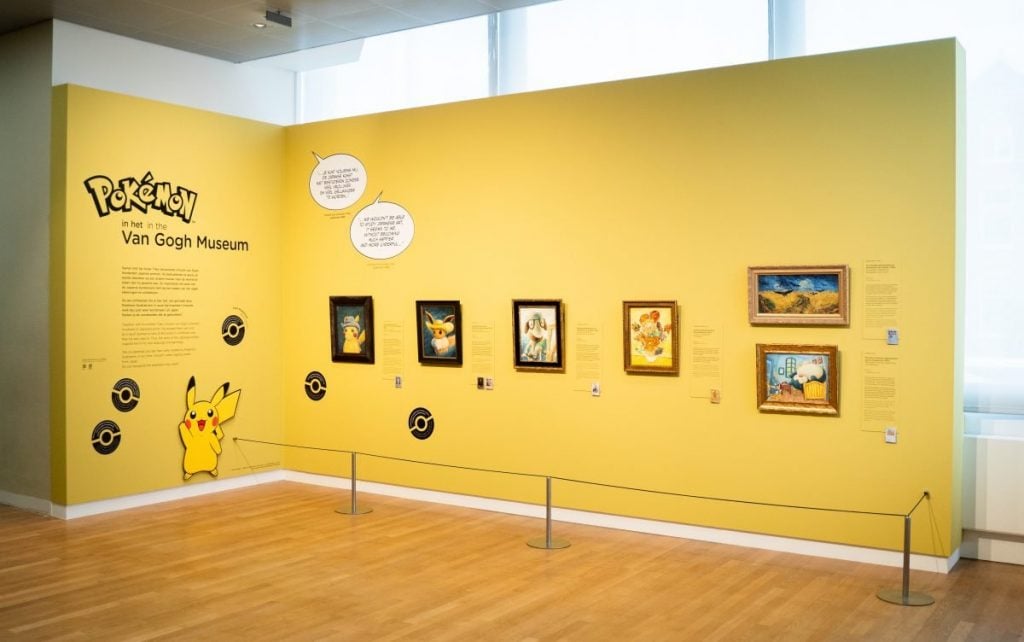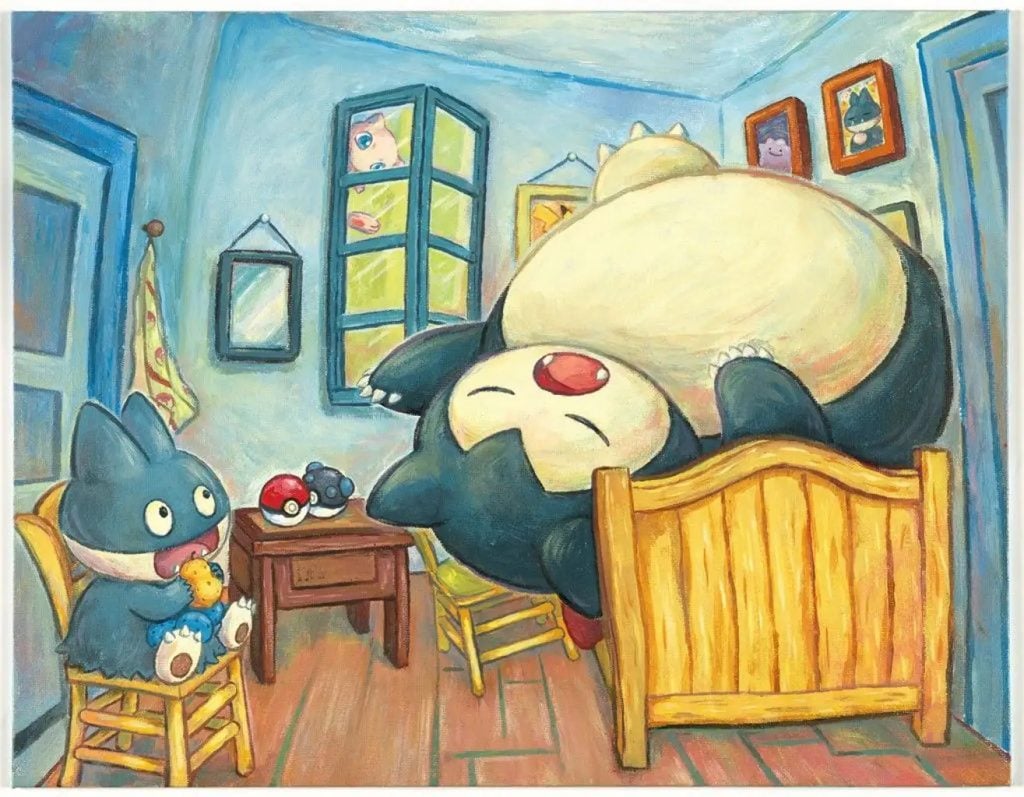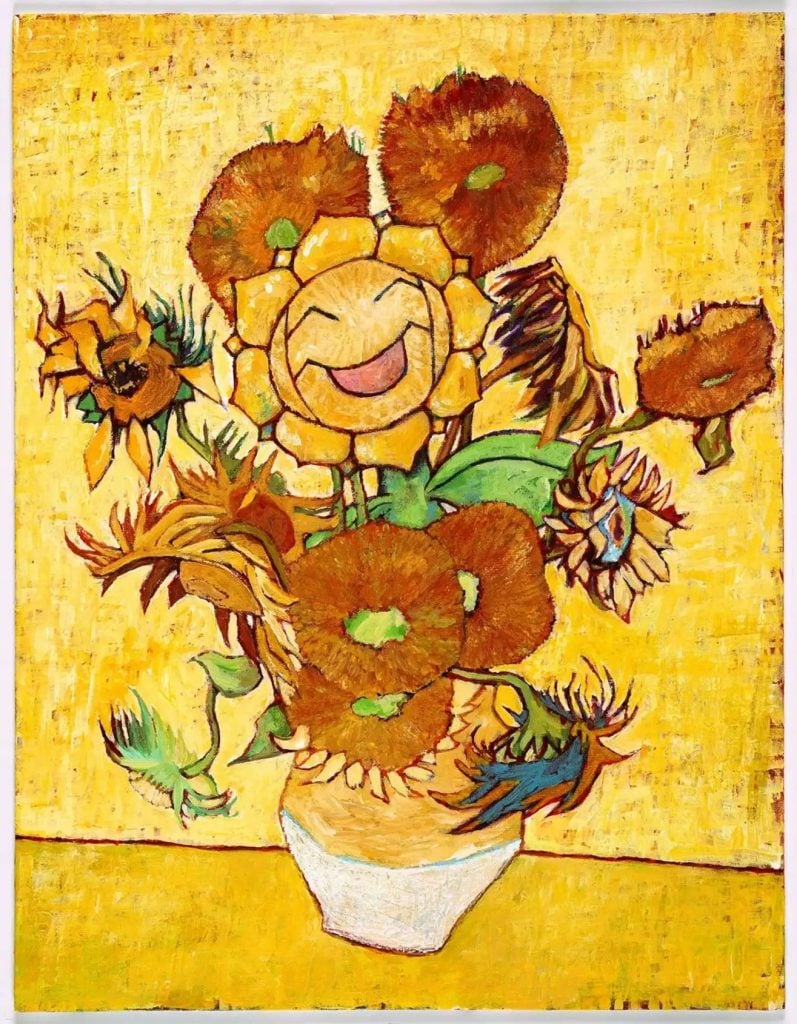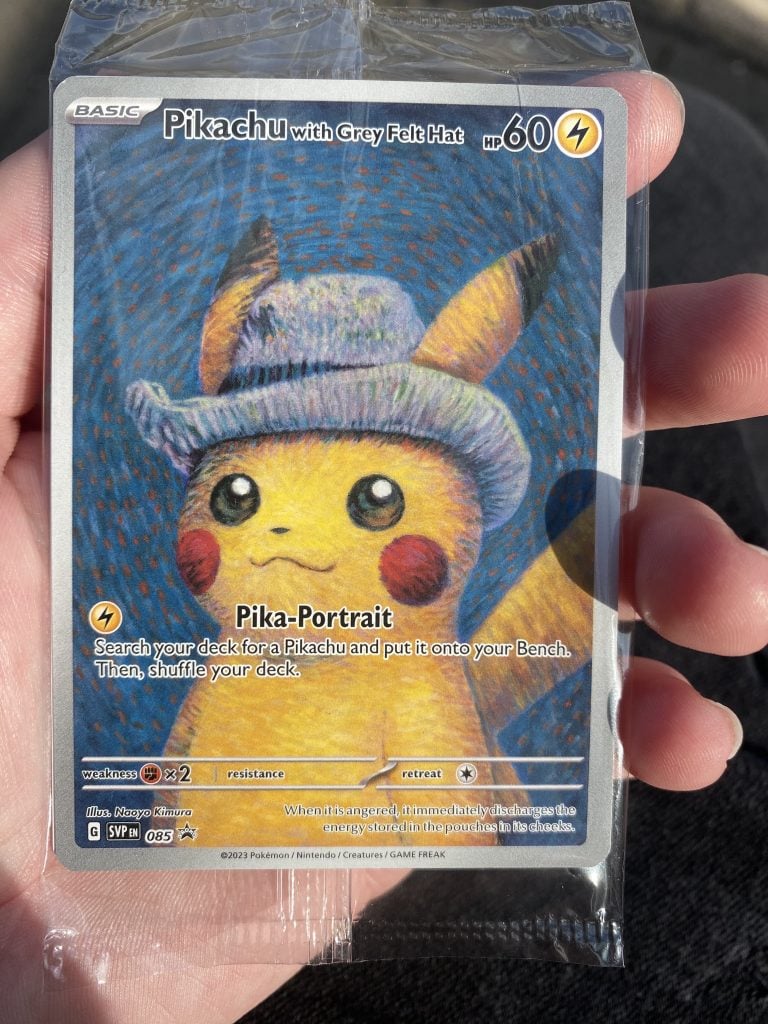Art & Exhibitions
Pokémon Gogh: What the Viral Mash-Up Between a Museum and a Japanese Brand Reveals About Their Shared Priorities
We visited the much-hyped exhibition at the Van Gogh Museum in Amsterdam.

We visited the much-hyped exhibition at the Van Gogh Museum in Amsterdam.

by
Carl Kinsella

On Saturday morning at the Van Gogh Museum in Amsterdam, a healthy throng gathered as is usual in front of the post-Impressionist master’s famous Sunflowers. A decent measure of shoulder-bumping was needed to catch a glimpse of The Potato Eaters. But the biggest crowd at the world-famous museum, by far, was the one that had formed an orderly queue outside the gift shop before 10.30 a.m.
This behaviour was, if nothing else, a marked improvement on what was seen in viral video footage of the frenzy on opening day of the institution’s much-hyped “Pokémon x Van Gogh Museum” exhibition. The collaboration was announced earlier this month with the kind of high-budget trailer Nintendo would use to launch a new video game.
You might have seen the footage of museum visitors picking clean the gift shop of its Pokémon merchandise in a manner reminiscent of a Black Friday Walmart stampede. Shoppers were clamoring for a number of limited edition t-shirts, postcards, tote bags and teddy bears mashing up the beloved pocket monsters with the famous Dutch painter’s works. What you might have missed, however, is that “Pokémon x Van Gogh Museum”—the show serving as the propulsion mechanism for all this hype—is tiny.

“Pokémon at the Van Gogh Museum” the Van Gogh Museum. Photo courtesy of the Van Gogh Museum, Amsterdam.
I did not have a measuring tape handy, but it’s likely that Pokémon takes up far more real estate in the gift shop than its exhibit takes up floor space in the gallery itself.
Running until January, the exhibit amounts to six paintings adhered to a temporary wall in the foyer of the museum’s first floor. Each follow the same formula, inserting Pokémon from the eponymous cartoon, card and video game sensation, into the paintings of Vincent van Gogh.
While it is the commercial element of this partnership that has so far caught the most attention, it would be unfair to dismiss the fruits of the exhibit out of hand. This was not entirely produced by some marketing machine. Artists have put their name to the works on view.
Naoyo Kimura, who has been an illustrator for the Pokémon Trading Card Game since 2001, composed a Pikachu inspired by Van Gogh’s Self Portrait with Grey Felt Hat. Sowsow (styled sowsow), Pokémon card illustrator since 2018, is responsible for Eevee taking Van Gogh’s place in the straw hat, but more notably, the appearance of Snorlax on the bed in Van Gogh’s The Bedroom. The results are charming and certainly worth a chuckle, though no critic would ever claim that this is intended as a serious reinterpretation of Van Gogh’s work.

Sowsow, Munchlax & Snorlax inspired by Vincent van Gogh’s The Bedroom (1888). Courtesy of the Pokémon Company International, ©2023 Pokémon/ Nintendo/Creatures/Game Freak.
So, why is the Van Gogh Museum learning into all of this? Van Gogh rarely painted animals, especially not in the kind of close focus on display here.
Instead, the museum found—or shoe-horned—its justification for the display within Van Gogh’s own correspondence. A quote, taken from a letter Vincent wrote to his brother Theo, is emblazoned above the works and reads: “We wouldn’t be able to study Japanese art, it seems to me, without becoming much happier and more cheerful.” The display goes on to note that Van Gogh was himself a collector of Japanese prints, and was likely inspired by Japanese art.
It’s not the most tenuous connection, but neither is it an especially high-minded point on which to hinge such a venture. Perhaps for this reason it feels like these six paintings offer little analysis of Van Gogh’s own work, little thought as to where any overlap in style might lie, and a little too obvious a focus on the marketing slam dunk that is giving Pikachu a little hat. Indeed, it seems possible that the idea arose because Van Gogh painted sunflowers, and there is a Pokémon—named Sunflora—who is literally a sunflower.

Tomokazu Komiya, Sunflora inspired by Vincent van Gogh’s Sunflowers (1889). Courtesy of the Pokémon Company International, ©2023 Pokémon/ Nintendo/Creatures/Game Freak.
The pocket-sized exhibition is also rather jarring in the context of the rest of the museum. As you travel upwards through the permanent collection, you’ll soon be reading the details of the troubled painter’s death via a self-inflicted gunshot wound and the deterioration of Theo Van Gogh’s health in the aftermath of his beloved brother’s demise. If you are a fully grown adult with the mind to comprehend such things, it’s hard to think of the how and where and why Pokémon fit into this narrative.
Will the exhibit increase the Van Gogh Museum’s reach, and global appreciation of his work? It’s possible. It’s possible that by engaging with the rest of the museum through the Pokémon workbook that children might develop a nascent appreciation of Van Gogh’s work, though it would be misleading to suggest that children are anything but a small minority of those who have forked over the $21 admission fee.
But whatever the artistic or narrative merit of inserting Pokémon into the work of Van Gogh, the presumably commercial motivation for the collaboration has borne immediate fruit.

Photo by Carl Kinsella.
Days after opening, punters remain gathered at the bottom of the museum’s exit steps, proffering fistfuls of cash to those prepared to part with their trading cards bearing the visage of a post-impressionist Pikachu in a little felt hat (which visitors can claim by filling out an activity booklet clearly designed for small children). Someone tried to buy mine for €50 (I instinctively said no and later questioned my judgement).
Ebay is now flooded with the cards, with some selling for as much as $2,439. By erecting this small temporary wall in the lobby of their first floor, the Van Gogh Museum has provided the brushstrokes for a scalper’s very own Starry Night.
Those who remember the advent of the trading card game in the late nineties and early aughts will remember the seemingly-childlike aspiration that the cards would be worth a fortune some day. Today, Pokémon materials have been known to fetch enormous prices at auction. An unopened first-edition set of 11 Pokémon booster packs, originally priced at around $10 per pack in 1999, sold for $408,000 at Heritage Auctions in 2021.
Meanwhile, the highest price ever fetched for a Van Gogh painting at auction stands at $117 million, achieved in 2022 and very likely a decided mark up on what was originally paid for the work. With that in mind, it’s hard not to see the true reason why the remix of the two cultural phenomena has so readily captured the public imagination.
While the art itself leaves much to be desired, the exhibit succeeds in tilling the common ground so important to both Pokémon and the art world at large: the creation of rarity, and the mechanisms to convert that rarity into cold hard cash.
More Trending Stories: